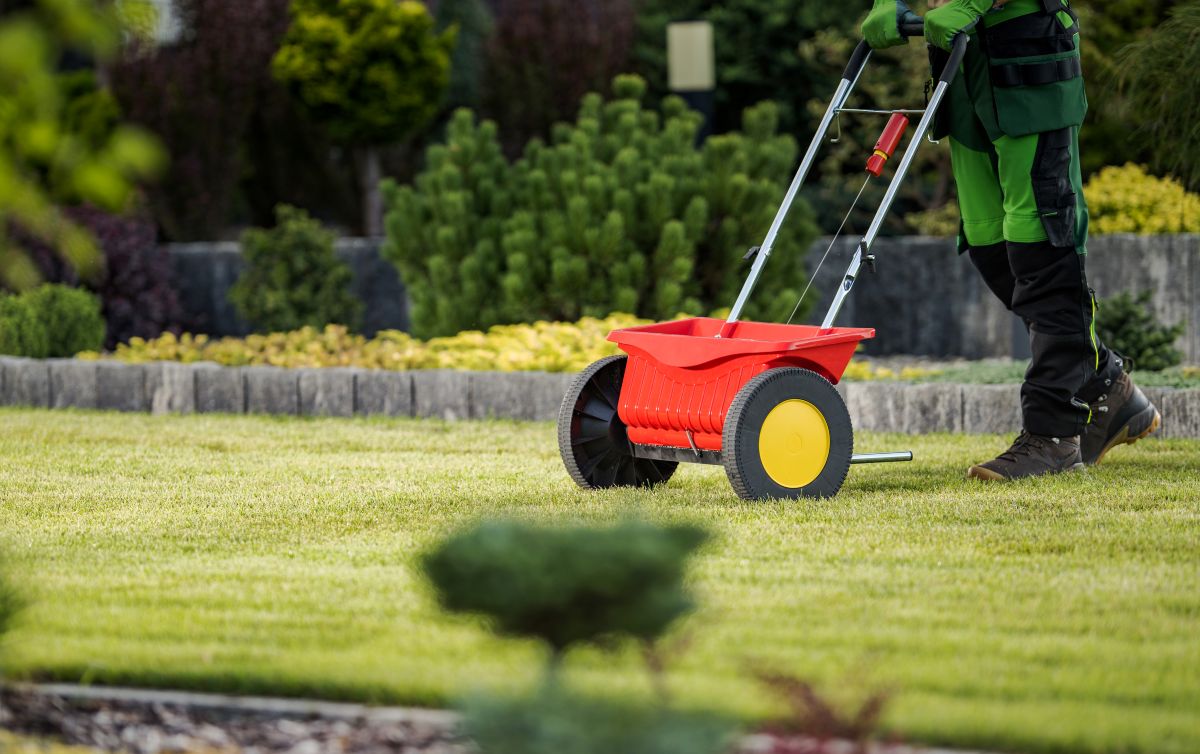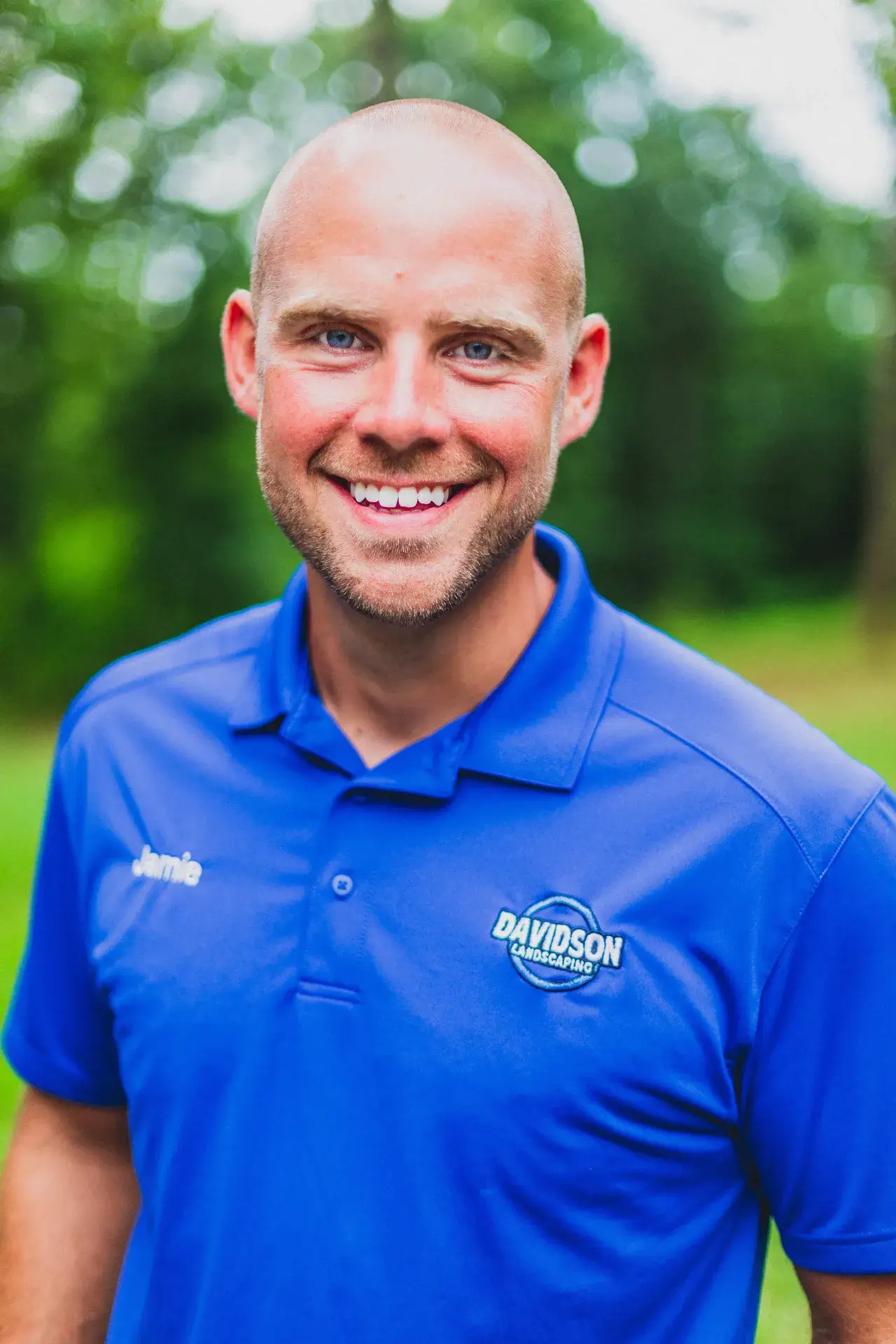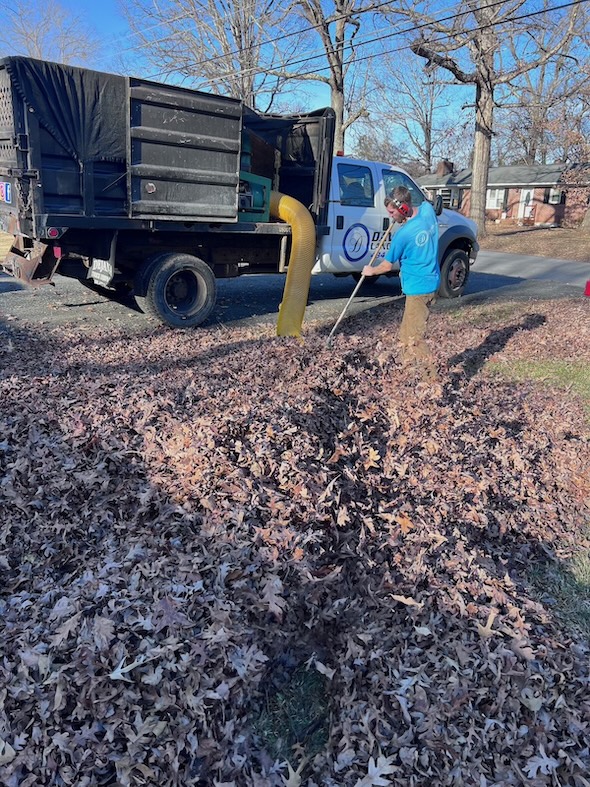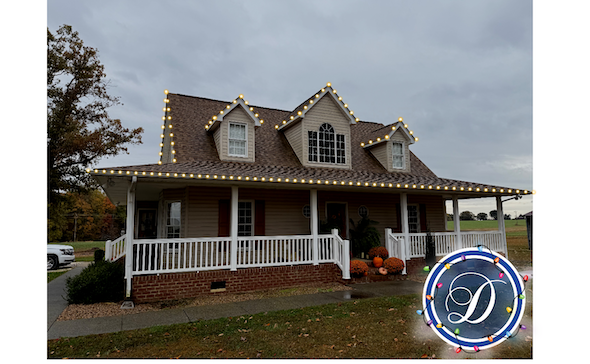I've been overseeding lawns in Central Virginia for over seven years, and I can tell you that this single technique has transformed more struggling lawns than any other service I provide. Last spring alone, I helped over 200 homeowners turn their patchy, thin grass into thick, lush lawns that became the envy of their neighborhoods.
If you're tired of looking at bare spots, thin grass, or a lawn that just doesn't seem to fill in properly, overseeding might be exactly what you need. Let me share everything I've learned about this game-changing lawn care technique.
What Is Overseeding and Why Does It Matter?
Overseeding is the process of planting new grass seed directly into your existing lawn without tearing up the soil or removing the current grass. Think of it as filling in the gaps and thickening what you already have.
Over the years, I've seen lawns decline for many reasons. Foot traffic wears down high-use areas. Drought stress kills patches of grass. Diseases and insects damage sections of your lawn. Pet urine creates dead spots. Even normal aging causes grass to thin out over time.
What is overseeding really accomplishing? It's introducing new, vigorous grass plants into areas where your existing grass has weakened or disappeared. These new grass plants fill in bare spots, thicken thin areas, and introduce improved grass varieties that resist diseases and tolerate stress better than older grass.
The Science Behind Successful Overseeding
During my years of lawn overseeding, I've learned that timing and technique make all the difference. New grass seed needs three things to germinate and establish: consistent moisture, proper soil temperature, and good seed-to-soil contact.
The germination process typically takes 7-21 days, depending on grass type and weather conditions. During this period, the seeds are vulnerable to drying out, washing away, or being eaten by birds. That's why proper preparation and timing are crucial for success.
I always tell my clients that overseeding isn't just about throwing seed on the ground. It's about creating the right conditions for new grass to thrive alongside your existing lawn.
When to Overseed: Timing Is Everything
After years of overseeding lawns throughout Lynchburg, Concord, and Appomattox, I've learned that timing can make or break your results.
Fall Overseeding (September-October) This is my preferred time for overseeding in Central Virginia. Fall provides ideal conditions: warm soil temperatures, cooler air temperatures, and typically more consistent rainfall. New grass has time to establish before winter dormancy and emerges strong in spring.
Spring Overseeding (March-April) Overseeding in spring can work, but it comes with challenges. You're racing against summer heat and competing with weeds that also germinate in spring. I only recommend spring overseeding when fall wasn't possible or when dealing with winter damage.
Summer Overseeding I rarely recommend summer overseeding. The heat and drought stress make it extremely difficult for new grass to establish. The exception is warm-season grasses like Bermuda, which can be successfully overseeded in late spring or early summer.
The Overseeding Process: Step by Step
Through years of experience, I've developed a systematic approach that consistently produces excellent results:
Step 1: Assess Your Lawn I start by identifying why your lawn is thin. Poor soil, shade, drainage issues, or disease problems need addressing before overseeding. Overseeding won't fix underlying problems.
Step 2: Choose the Right Seed Grass seed selection depends on your specific conditions. For sunny areas, I often use tall fescue blends. For shade, fine fescue works better. I match new seed to your existing grass type when possible.
Step 3: Prepare the Soil This is where most DIY projects fail. I remove thatch buildup, rake bare areas to loosen soil, and ensure good drainage. Sometimes I add compost to improve soil quality.
Step 4: Apply the Seed I use a broadcast spreader for even distribution. The key is applying seed at the correct rate - too little won't fill in properly, too much creates overcrowding and weak grass.
Step 5: Ensure Good Contact I lightly rake seeded areas to ensure seed-to-soil contact. This step is crucial for germination. Seeds sitting on top of grass or thatch rarely germinate successfully.
Step 6: Water Management This is where I see most failures. New seed needs consistent moisture for 2-3 weeks. I water lightly but frequently - usually 2-3 times daily during dry periods.
Aeration and Overseeding: The Perfect Combination
One of the most effective techniques I've discovered is combining aeration and overseeding. Core aeration creates small holes in your lawn, reducing soil compaction and creating perfect seed beds for new grass.
When I perform aeration and overseeding together, the results are dramatically better than overseeding alone. The aeration holes provide protected spaces for seeds to germinate, improve water infiltration, and reduce competition from existing grass.
I typically aerate first, then overseed immediately while the holes are fresh. This combination works especially well on compacted soils common in our Central Virginia clay.
Common Overseeding Mistakes I See
After overseeding hundreds of lawns, I've seen the same mistakes repeatedly:
Mistake 1: Wrong Seed Type Using sun grass in shade or shade grass in sun leads to poor results. I always match seed to specific site conditions.
Mistake 2: Poor Soil Preparation Throwing seed on unprepared soil rarely works. Compacted soil, thick thatch, or poor drainage will sabotage your efforts.
Mistake 3: Inconsistent Watering New seed dies quickly if it dries out. I see many failed overseeding projects where watering was inconsistent during the critical first few weeks.
Mistake 4: Wrong Timing Overseeding during hot, dry periods or just before winter leads to poor establishment. Timing matters more than most people realize.
Overseeding Different Grass Types
My experience has taught me that different grass types require different approaches:
Tall Fescue This is my go-to grass for most Central Virginia lawns. It's drought-tolerant, wear-resistant, and establishes well from seed. I typically use 6-8 pounds per 1,000 square feet for overseeding.
Fine Fescue Perfect for shady areas where tall fescue struggles. It requires less water and fertilizer but doesn't handle heavy traffic well. I use 4-5 pounds per 1,000 square feet.
Bluegrass Beautiful when established but requires more water and maintenance. I usually blend it with other grasses rather than using it alone.
Bermuda Grass For warm-season areas, Bermuda overseeding works well in late spring. It spreads aggressively and handles heat and drought better than cool-season grasses.
Post-Overseeding Care
The work doesn't end when the seed is planted. Proper post-overseeding care determines success:
Watering Schedule I recommend light, frequent watering for the first 2-3 weeks. Once grass emerges, I gradually reduce frequency but increase duration to encourage deep root growth.
First Mowing I wait until new grass reaches 3-4 inches before the first mowing. Sharp mower blades are essential to avoid pulling up new seedlings.
Fertilization I apply starter fertilizer at seeding time, then follow up with regular fertilization once grass is established. Over-fertilizing young grass can cause problems.
Traffic Management I advise clients to minimize foot traffic on newly seeded areas for at least 6-8 weeks. New grass needs time to develop strong root systems.
Signs Your Overseeding Was Successful
After thousands of overseeding projects, I know what success looks like:
- New grass emerges within 2-3 weeks
- Bare spots fill in with thick, healthy grass
- Overall lawn density increases significantly
- Grass color improves as new varieties establish
- Lawn becomes more resistant to drought and wear
When to Call Professionals
While overseeding seems straightforward, I've learned that success requires experience and attention to detail. Professional overseeding services have access to commercial-grade equipment, high-quality seed, and the expertise to handle unexpected challenges.
I recommend professional help when:
- You're dealing with large areas
- Your lawn has underlying problems
- Previous DIY attempts have failed
- You want guaranteed results
Regional Considerations for Central Virginia
Our Central Virginia climate presents unique challenges for overseeding. Clay soils, variable rainfall, and hot summers require specific techniques I've developed over years of local experience.
I've found that fall overseeding works best in our region, typically between September 15 and October 15. This timing takes advantage of warm soil temperatures and cooler air temperatures that favor grass germination.
The Investment and Returns
Overseeding is one of the most cost-effective ways to improve your lawn. The investment in seed and preparation pays dividends in improved appearance, reduced maintenance, and increased property value.
I've seen overseeding projects transform lawns that looked beyond repair into beautiful, thick grass that rivals the best properties in the neighborhood.
Long-term Benefits
Successful overseeding provides benefits that last for years:
- Thicker grass crowds out weeds naturally
- Improved drought tolerance reduces watering needs
- Better disease resistance from newer grass varieties
- Enhanced curb appeal and property value
- Reduced need for expensive lawn renovation
After seven years of helping Central Virginia homeowners achieve beautiful lawns through overseeding, I can tell you that this technique works when done properly. The key is understanding your specific conditions, choosing the right seed, timing the project correctly, and providing proper care during establishment.
Whether you're dealing with thin grass, bare spots, or an aging lawn that needs rejuvenation, overseeding can transform your property. The process requires patience and attention to detail, but the results speak for themselves.
Ready to transform your thin, patchy lawn into a thick, green paradise? Contact Davidson Landscaping today for a free consultation. We'll assess your lawn's specific needs and create a customized overseeding plan that delivers the results you want.
Frequently Asked Questions
How long does it take to see results from overseeding?
New grass typically germinates within 7-21 days, depending on grass type and weather conditions. You'll see significant improvement in lawn thickness and appearance within 6-8 weeks of proper overseeding.
Can I overseed my lawn myself or should I hire professionals?
While overseeding can be done DIY, professional services ensure proper seed selection, soil preparation, and timing. Professionals also have access to commercial-grade equipment and high-quality seed that improves success rates.
What's the difference between overseeding and aeration and overseeding?
Overseeding alone involves spreading seed on existing grass. Aeration and overseeding includes core aeration first, which creates holes in the soil, reduces compaction, and provides better seed-to-soil contact for improved germination.





